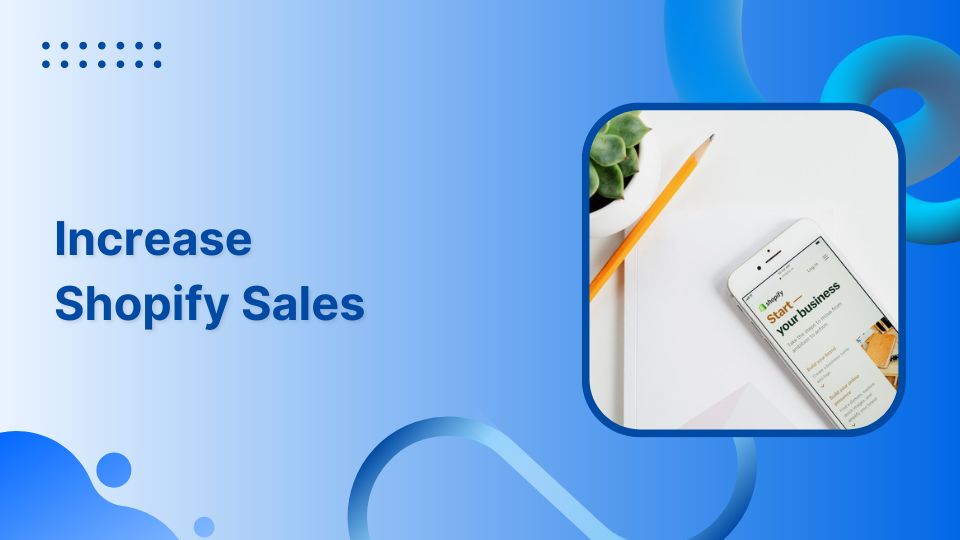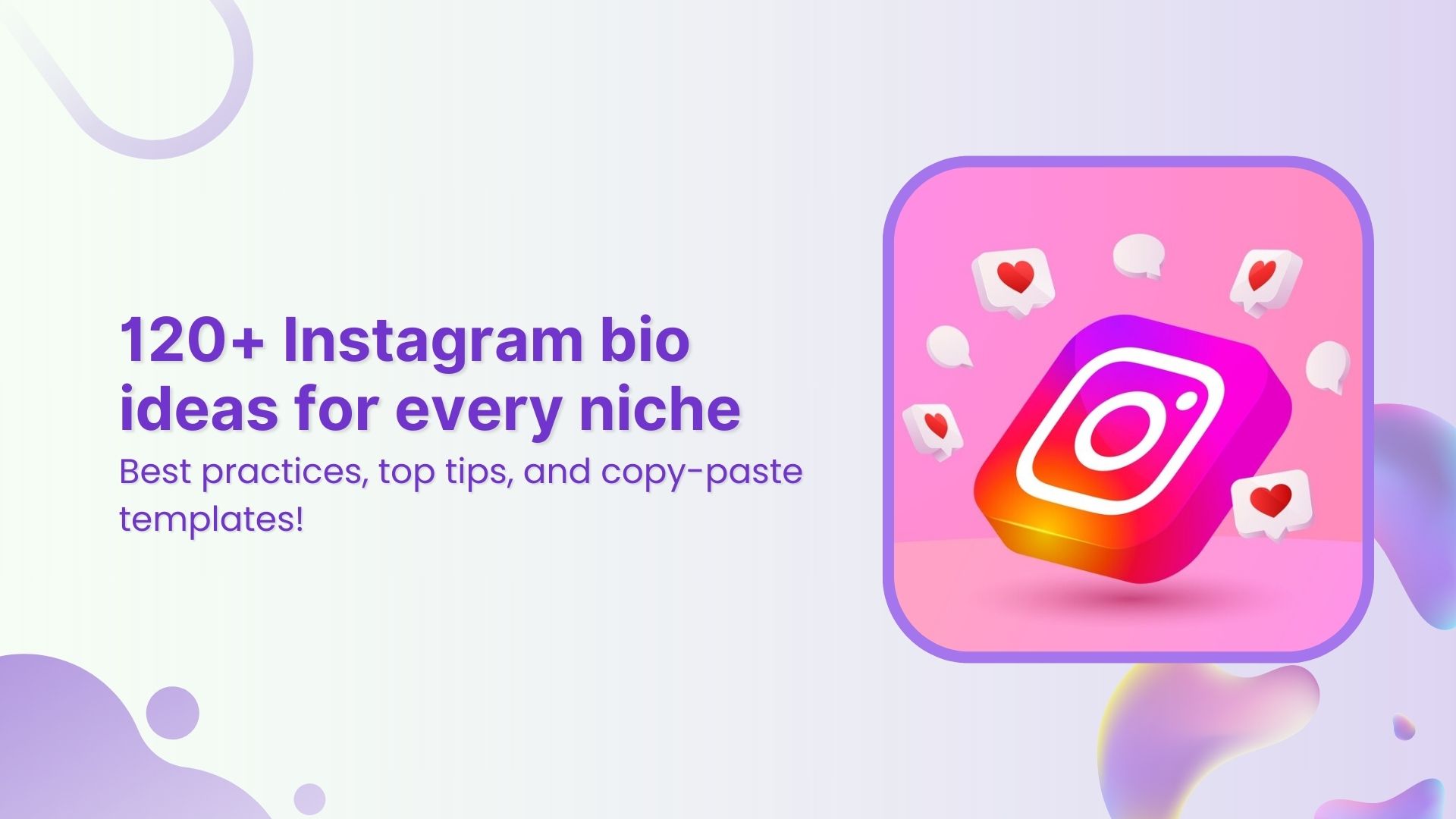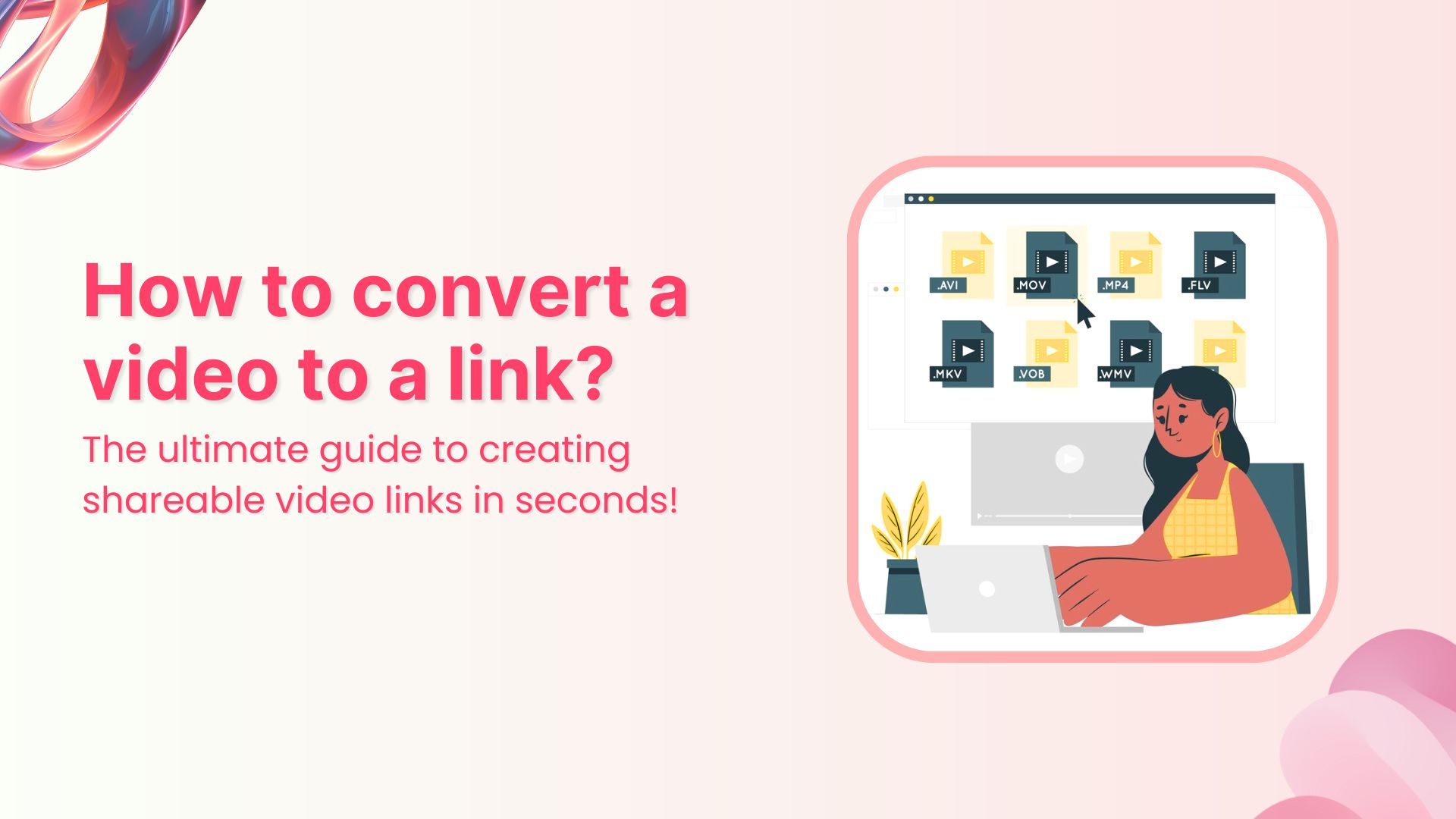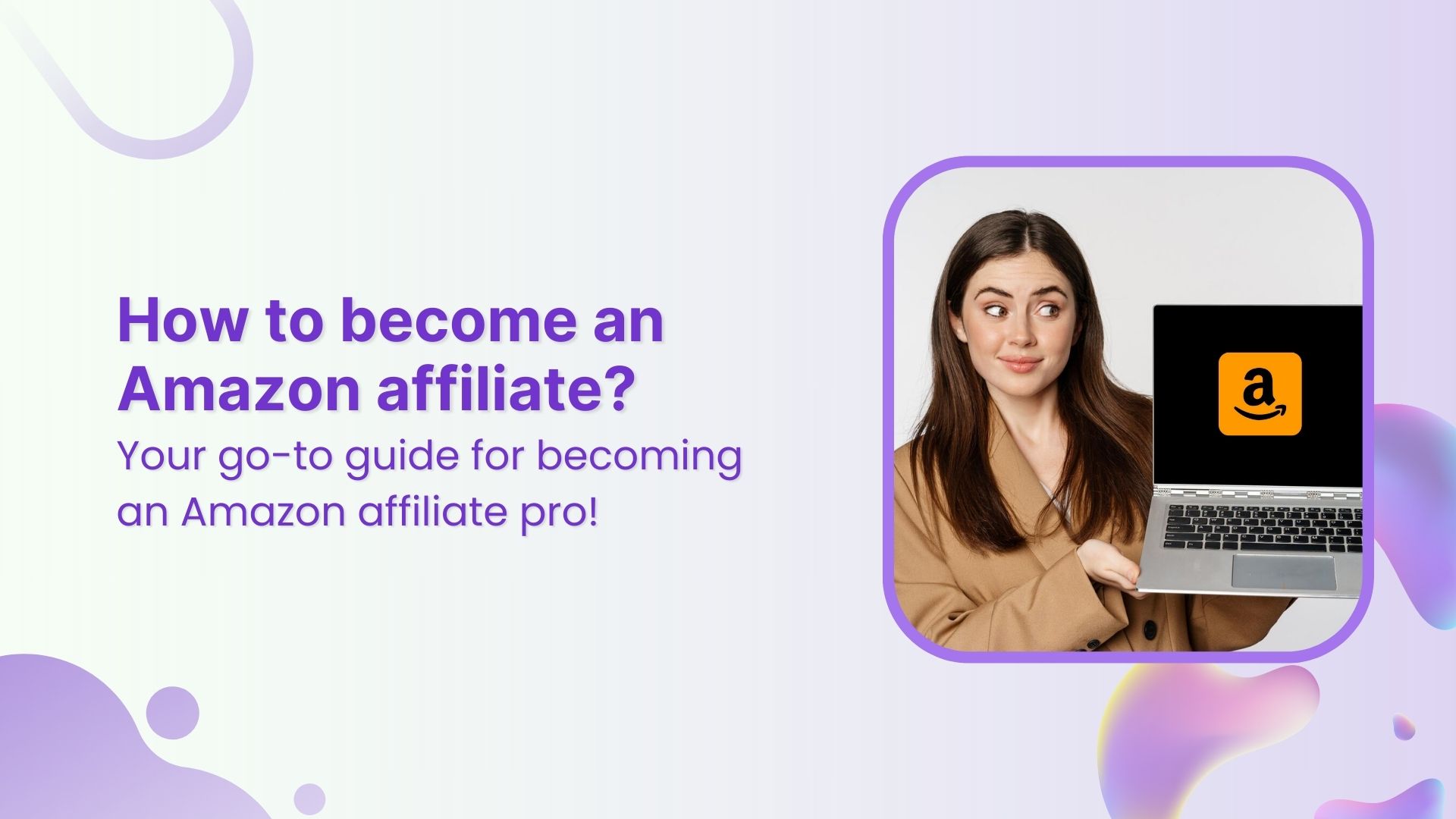Shopify is an eCommerce platform that enables entrepreneurs to start their own online stores. It is simple to use and offers a wide range of features and customization options. Shopify stores have made approximately $1 trillion in global sales. Hence, it’s more than important to learn strategies that will help you increase Shopify sales.
Why do you need to increase your Shopify sales?
If you are part of the sales industry and increasing sales is not your goal, then switch to another profession or line of business.
Well! if sales is what you want, then we are on the right track, as there are many reasons why you might need to increase your Shopify sales. Perhaps you want to meet your sales goals, or perhaps you’re looking to grow your business.
Why your Shopify store isn’t making sales?
If you are already owning a Shopify store and are not able to generate good sales then check out Tan Choudhury’s exciting video on this topic.
Here are some quick tips that will positively impact your Shopify sales. (Discussed in detail in the latter part of the blog)
- First, take advantage of Shopify’s built-in marketing tools.
- Secondly, use social media to drive traffic to your store.
- Use platforms like Twitter and Facebook to share your products with a broader audience, and don’t forget to include links to your Shopify store.
- Use the email marketing tool to send regular newsletters to your customers and include strong calls to action.
- Offer discounts and free shipping incentives to encourage people to buy from your store.
- Finally, provide excellent customer service, so that people have a positive experience shopping with you and are likely to return in the future.
Strategies to increase your Shopify store’s sales and conversions
Here are the ways to boost your Shopify sales.
1. Focus on your niche & target audience
If you want to be successful in online marketing, you need to focus on your niche and target audience. You can’t be everything to everyone, so it’s important to identify your ideal customer and craft your marketing message for them. By doing this, you’ll be able to attract more of your target audience, leading to more sales and conversions.
We know that Third Party Data has been useful in converting users to customers, you can also use First Party Data to identify your targets and amplify eCommerce sales.
Here’s a video by Dan Shaffer of Webfx marketing team discussing the use of First Party Data.
2. Enrich the customer experience
Make sure your customers have a positive experience when interacting with your brand. This includes everything from their first contact with your online store to after they’ve made a purchase. If they’re unhappy at any point in the process, they’re likely to take their business elsewhere.
The best way to keep customers happy is by providing excellent customer service. Making things right for your customers will go above and beyond to do so. In return, this will earn their respect and encourage them to continue doing business with your company in the future.
3. Create convincing web-copy
Your website’s copy is one of the most important elements in your conversion arsenal. It needs to be clear, concise, and persuasive to convince your visitors to take the actions you want them to take.
Explain how your offering will improve the lives of the readers in a specific and concrete way.
Finally, be sure to proofread your copy carefully before you publish it. Typos and grammatical errors can make you seem unprofessional and reduce the effectiveness of your message.
4. Use attractive visuals
When it comes to online marketing, visuals are key. People are more likely to engage with content if it contains attractive visuals, so ensure to use images, infographics, and videos in your messages.
5. Focus on customer retention
A company’s success depends on its ability to keep its customers happy and coming back for more. That’s why it’s important to focus on customer retention and acquisition. You won’t be able to keep your business afloat if you constantly lose customers.

Domino’s used Google and Facebook ads targeting specific customer personas to deliver the right messaging to the right people. As a result, incremental increases in conversions for both customer acquisition and customer retention. Here’s the shot of their ad.
But how do you increase customer retention?
Here are a few ideas:
- Offer incentives for loyalty: Reward your best customers for sticking with you. For example, offer loyalty discounts or points that can be redeemed for complimentary products or services. The more you show your appreciation, the more likely they will stay loyal.
- Stay in touch: Keep in touch with your customers even after they’ve made a purchase. Send them follow-up emails or postcards to thank them for their business and let them know you’re always there if they need anything else. A little bit of communication can go a long way toward keeping them happy.
- Refunds make returning customers possible: Customers who receive refunds know that you care about their satisfaction. They’ll see that the experience matters more than the money they spent, and they’ll appreciate it when you take the time to fix a mistake or solve a problem.
When customers receive a refund on an item they purchased, they’re likely to shop with that company again. Customers do business with companies that are transparent in their transactions. Trust builds loyalty and encourages them to shop with your business again.
- Offer free shipping: Free shipping is one of the most common ways to increase sales. It is always a great incentive to get customers to make a purchase. In fact, it’s so effective that some eCommerce giants like Amazon and Zappos offer free shipping on all orders. Of course, you don’t have to provide free shipping for every product, but you should for your high-margin products. And if you offer it, make sure you advertise it on your product and checkout pages.
6. Create a landing page that converts
When you create a landing page, remember that its purpose is to convert visitors into leads or customers. To do this, your landing page must be carefully crafted and include certain key elements.
- First, your headline must be attention-grabbing and relevant to what your visitors are looking for.
- Second, your offer must be clear and concise; make sure it’s easy for visitors to understand what they’re getting in exchange for providing their contact information.
- Finally, use strong calls-to-action (CTAs) to encourage visitors to take the next step.
7. Design astounding CTA (Call-to-Action)
Designing a compelling call-to-action (CTA) can be the difference between a successful marketing campaign and one that falls flat. A CTA is meant to persuade your audience to take the desired action.
There are a few key elements to consider when designing a CTA:
- The offer: What are you offering your audience? Make sure it’s something they want or need.
- The copy: The words you use in your CTA must be persuasive. Use active language and make it clear what you want the reader to do.
- The design: Your CTA should stand out from the rest of your content. Use colors, whitespace, and images to make it eye-catching.
- Software as a service (SaaS) providers have a longer customer journey cycle that requires lead nurturing. Therefore, CTA buttons like “Get a demo” or “Book your demo” sets the users in the right direction.
Here’s an example of Segment (SaaS platform) using “Get a Demo” CTA. 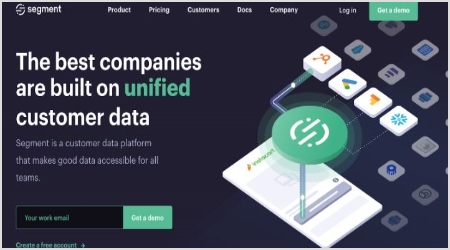
Related: Call To Action For Social Media : 15 Best Examples
8. Smooth navigation experience on the Shopify store
When it comes to online shopping, one of the most important factors is store navigation. If a store is difficult to navigate, it can lead to frustration and abandoned carts.
Make sure your store is easy to use by having clear menus, search functions, and filters. Also, provide plenty of product information so shoppers can make informed decisions. To further enhance the shopping experience, consider utilizing Shopify store design services to create a visually appealing and user-friendly layout that can significantly increase customer satisfaction and sales.
9. Make your store load fast
Making sure your eCommerce store loads quickly and doing this is important for several reasons i.e.
- First, it keeps customers from getting frustrated and leaving before they even see what you have to offer.
- Second, it helps your search engine rankings since Google and other engines prioritize fast-loading sites.
- Finally, it just makes good business sense to have a website that runs smoothly and efficiently.
Research has proved that the faster the website loading speed, the higher chances of converting the website visitors. For every second it takes the website to load, the conversion rate can drop at an average of 0.3%.
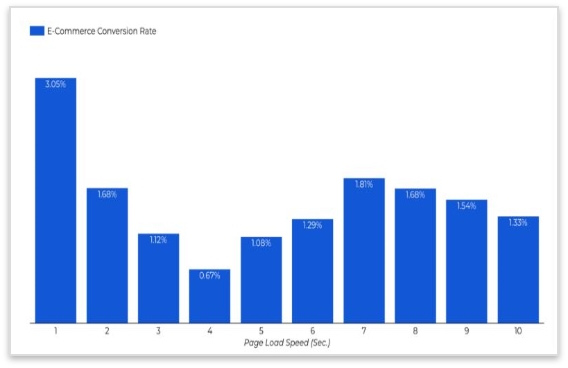
You can do a few key things to ensure your store loads quickly.
- First, use a good hosting service that can handle greater traffic loads.
- Second, optimize your images so that they load quickly.
- Ensure your URL is SEO optimized.
- Lastly, make sure your code is clean and well-organized.
10. Upsell & Cross-Sell
Up-selling and cross-selling is an intelligent way to turn your prospects into customers. You can persuade them to buy more products or services from you by offering a special offer or discount. You can use this technique in any situation where you think the customer might be interested in other products you sell.
What’s the difference between two?
Cross-selling is to pitch an item that is related to the first purchase, such as burger with chips. Upsell is a trade offer to buy an upgraded version of an item intended for the first purchase such as 500ml Coke to be traded with a 1000ml Coke. Usually such cross-sells and up-sells offer some discount or benefit to customers as well. It’s kind of a win-win situation.
Check out the image below for more clarity.
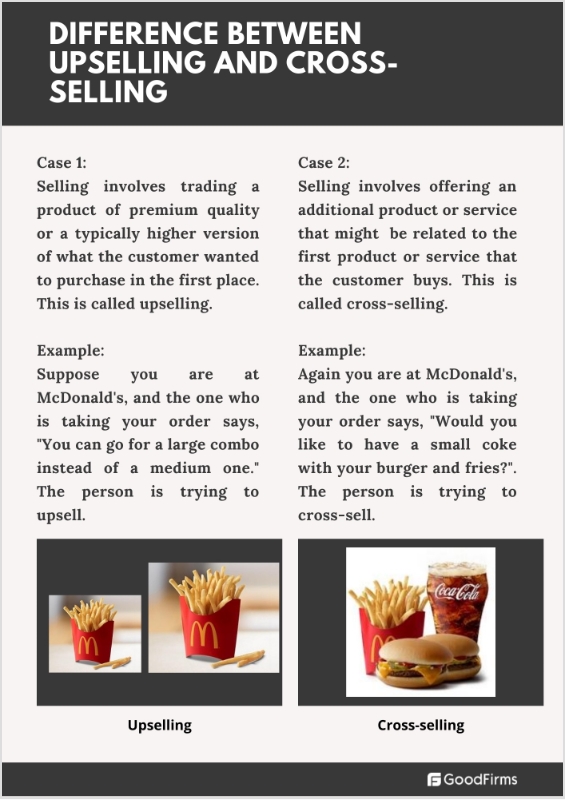
Here’s an example of Amazon cross selling by showing items to visitors that are frequently bought together.
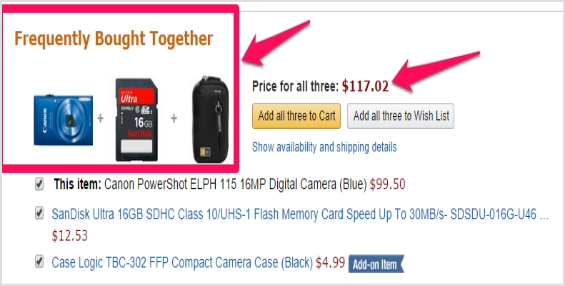
Another example of up-selling and cross-selling.

ReConvert is a powerful tool that allows you to up-sell and cross-sell your products and services. It will enable you to create custom offers, package deals, and track and manage your sales pipeline. ReConvert also provides valuable insights into your customer’s buying behavior so that you can optimize your sales strategy.
This is especially useful when you have a product or service that the customer doesn’t know about.
For example, if you’re selling a new product, you can use reconvert up-sell and cross-sell to convince them to buy it. You can also use it to get them to buy more of an existing product they already like.
11. Retargeting Ads
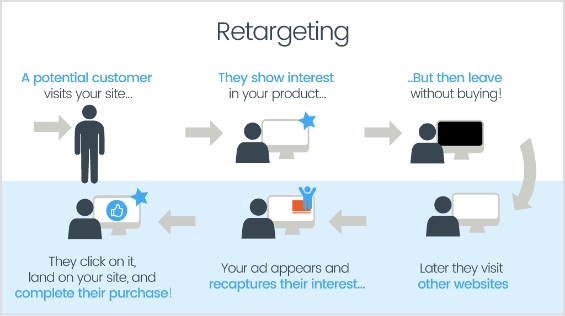
Retargeting is a process that shows your customers ads for products they have already viewed on your website or app. Thus, making the users more likely to be interested in your offerings.
If you’re looking to retarget your customers with ads relevant to their interests, consider using Retargeting Ads. Retargeting also reduces shopping cart abandonment, which is important for any online business. However, there are a few things you can do to reduce the number of people who abandon their shopping carts.
Here are some examples of a Facebook retargeting ad run by Myfix Cycles. The ad boosted their CTR by 6.38% and gained a revenue of $3,043.20 from an ad spend of $199.07 meaning that they earned $15 at a cost of $1 ad spend.
Check the retargeting ad below.
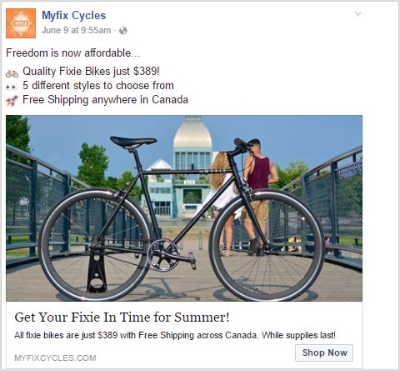
- First, ensure your website is easy to use and navigate. If potential customers can’t find what they’re looking for, they’re likely to give up and go to another site.
- Second, offer a variety of payment options. Some people may be hesitant to enter their credit card information online, so allowing them to pay via PayPal or another payment method may increase their chances of completing their purchase.
- Finally, provide customer support in case anyone has questions or problems. If customers feel like they can’t reach someone if something goes wrong, they’ll be less likely to take the risk of buying from you.
Related: The Ultimate Guide to Increase Sales on Amazon and Other Marketplaces
12. Optimize your checkout page
Optimize your checkout page if you want to improve your website’s conversion rate. Ensure that your checkout page is user-friendly and easy to navigate. As a result, you can encourage more visitors to complete their purchase.
Additionally, you can add features like customer testimonials or guarantees to increase trust and confidence in your site. To ensure your checkout page is optimized for conversion, here are a few key elements that you should focus on.
- First, ensure the page is visually appealing and easy to navigate.
- Second, ensure the checkout process is simple.
- Lastly, ensure your payment gateway solution is secure and reliable.
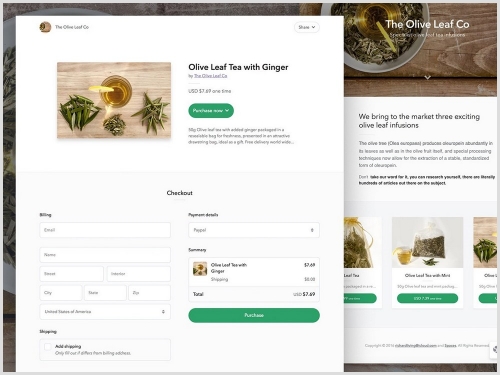
In addition to the above, I recommend that one step check out pages are a great way to keep the user engaged without breaking the web experience, and help users complete the purchase. Design such page experience for registered and repeating visitors and
Related: 8 Promising Ecommerce Payment Trends
13. Leverage social media to increase sales
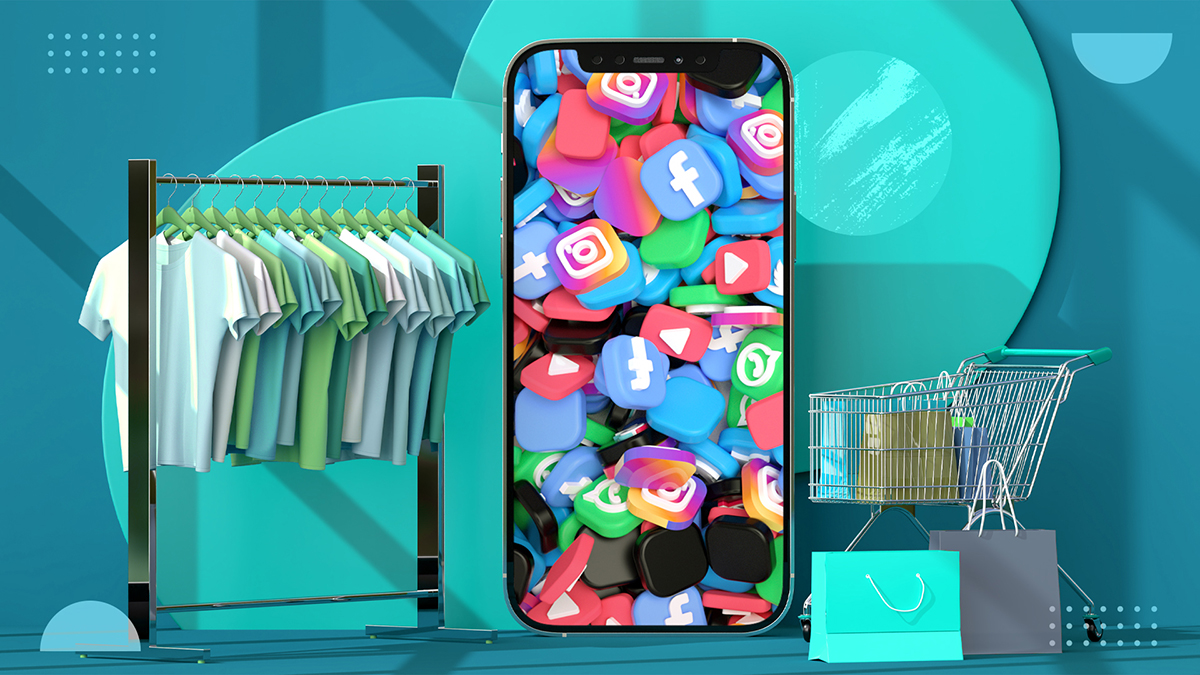
Social media is one of the most powerful tools in your eCommerce sales toolkit. It can help you connect with customers, identify new leads, and build relationships with clients and customers.
You’re missing out on a huge opportunity if you’re not using social media to increase Shopify sales. Here are a few tips to get started:
- Use social media to connect with customers and build relationships: Make sure you’re active on the social platforms that most of your customers use. Connect with them, answer their questions, and provide valuable content. The more you interact with them, the more likely they will do business with you.
- Use social media to identify new leads: Social media is a great way to find new leads. Use keywords and hashtags to find potential customers interested in your products or services. Then reach out and introduce yourself.
Related: How to Quickly Increase Social Media Conversions in 2022
- Sell on multiple platforms: Selling on multiple platforms can be a great way to reach more customers and increase Shopify sales. Unfortunately, it can also be a bit of a hassle, as you have to manage your inventory and listings on multiple sites. But if you can make it work, it can be a great way to grow your business.
However, keeping up with multiple platforms and tracking your sales can also be a lot of work. That’s where tools like ContentStudio and Replug bio links come into play and help schedule, manage, and track your performance on multiple platforms from one place.
- Use social media to close deals: Once you’ve built a relationship with a customer or client, use social media to close the deal. Send them a direct message or give them a call to seal the deal.
14. Consider paid advertising and search engine optimization
Paid advertising, also known as pay-per-click (PPC) advertising, is a way to get your website to show up in search engine results without having to earn your way there through good content. You can buy ads that appear as sponsored results on Google and other search engines. These ads are bought through an auction system in which you bid on keywords related to your business. The more you are willing to pay per click, the higher your ad will appear in the search results.
15. Use SEO to increase your Shopify store’s discoverability
Search engine optimization is a process of improving the ranking of your website in the search results by making changes to the site itself. This can include improving the quality of the content, making sure the site is easy for search engines to crawl and index, and building links from other websites.
SEO is a great way to increase the discoverability of your Shopify store. By optimizing your store for relevant keywords, you can attract more traffic.
In addition, create quality content and ensure your store is easy to navigate. In return, it can encourage visitors to stay longer and explore more of what you have to offer. These steps can ensure that your store is seen by more people and generates more sales.
- Include high-quality, optimized product photos: Make sure to include several high-quality product photos with each listing. Customers want to see what they’re buying, so don’t skimp on the visuals.
- Drive traffic through SEM: Search engine marketing (SEM) is a form of advertising that allows you to pay for placement in search results, making it even easier for people to find your site. Both SEO and SEM can be highly effective in driving traffic to your website and generating leads.
- Optimize product listings for SEO and conversions: Ensure your product listings are optimized for both SEO and conversions. This means using the right keywords, as well as creating compelling descriptions and titles that will entice potential customers to click.
Here’s a video of famous digital marketer Neil Patel sharing 4 eCommerce SEO techniques for beginners.
16. Use email marketing to increase sales on Shopify
Email marketing is a powerful tool that can help increase sales on Shopify. You can boost your sales and conversions by building a list of subscribers and sending them targeted emails.
Here are some tips to get started:
- Special offers: Email marketing can be a great way to connect with customers and create a relationship with them. It can be used to promote sales, special offers, and new products or services. Email marketing can also be used to keep customers updated on company news and events. By keeping customers informed, you can create loyalty and connection with them.
- Build a high-quality email list: The first step to successful email marketing is to build a high-quality email list. This means acquiring subscribers interested in your products or services and likely to buy from you. There are a number of ways to get such a list, e.g., use pop-ups, landing pages, and lead magnets.
- Send targeted emails: Once you have a list of subscribers, it’s important to send them targeted emails. It requires creating content that is relevant to the interests and needs of your target market. For example, if you sell products for home improvement, you might send an email with tips on how to improve the value of your home.
Lastly, here’s a video of Joshua Chin (co-founder of Chronos Agency) sharing 3 golden rules of email marketing.
Related: Email Marketing: The Best Time And Day To Send Your emails And Make An Impact
17. Building customer relationships after the sale
Building customer relationships after the sale is an important part of any business, especially if you want to increase Shopify sales. There are a few key ways to build customer relationships after the sale:
- Send a thank-you note: This is a simple way to show your appreciation for their business. A handwritten note goes a long way in building a relationship.
- Follow up: Following up with your customers shows that you care about their experience and want to ensure they are satisfied. This can be done through phone calls, emails, or social media.
- Offer discounts: Offering discounts or coupons for future purchases is a great way to show your customers that you value their business. This will help to build loyalty and keep them coming back.
- Ask for feedback: Asking for feedback shows that you are open to improvement and want your customers to be happy. Therefore, take feedback from your customers to make changes and improve the customer experience.
18. Monitor your inventory
Monitor your inventory to ensure you have enough products to meet customer demand. Review your sales data to see what products are selling well and order more of those items. Keep track of your inventory levels so you can reorder products before you run out.
Apply the tips and strategies mentioned above to maximize your chances of success with Shopify.
So what are you waiting for? Start building your dream store today!
FAQs on how to increase Shopify sales
What Shopify metrics should you track?
There are a few key Shopify metrics that you should track to ensure the success of your store. The important metrics to track are:
- Average order value
- Conversion rate
- Referral rate
- Total sales
- Customer lifetime value
- Churn rate/Retenion rate
- Customer acquisition costs
How long does it take to get sales on Shopify?
It usually takes around 24 hours for sales to show up on Shopify after a customer has made a purchase. However, it can sometimes take longer for sales to appear. If there are issues with the payment processor or the order is placed on hold for some reason, and you’re concerned about why sales aren’t appearing in your Shopify account, you can contact Shopify support for help.
What is the average Shopify conversion rate?
Shopify is a platform for businesses of all sizes to create an online store. The average Shopify conversion rate is 2%. This means that for every 100 visitors to a Shopify store, 2 of them will make a purchase.



























